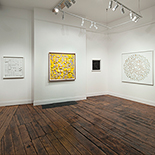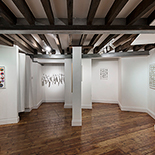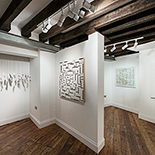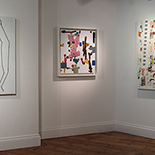





The Work of Art in the Age of Post-Mechanical Reproduction
If two things are for all intents and purposes the same, is it possible to think about one of them as the original and the other as a copy? If we are talking about two nearly identical pianos, it is doubtful that one of them can be deemed the original - but if we are talking about two nearly identical paintings things definitely start to get muddy. And if we are talking about two nearly identical collages made up of nearly identical collections of ephemeral waste the question somehow loses validity, though I do very much like the idea of authentic waste.
The title above is a play on an essay written nearly 80 years ago by Walter Benjamin, who was thinking about all kinds of things. He thought the Dadaists intended to destroy the aura of their works, “on which they mounted buttons and tickets”; but I would like to try to think about this ‘aura’ in a different way.
Is it not true that a collage or assemblage gains an aura through the act of its making? The mass-produced, the ephemeral, the copied become components of the original, the unique and authentic almost as a byproduct of the work that the artist does. It is the job of this kind of artist to reverse the direction of the usual vector, the one that goes from idea to product, from original to copy.
Most of the pieces on show here have been built out of redundant or used-up things: untriangled coat hangers, untwisted lids, emptied blister packs, discarded slips and stubs, vacuum-moulded plastic shells left hollow when the goods they housed have gone. I can’t say for sure why I’m drawn to these things.
Part of it could be autobiographical: they were my coat hangers; I can faintly recall the strain of getting that jar of chickpeas open; I took those pills through jet-lag and flu. I don’t harvest other people’s junk, which makes it even more astonishing contemplating the pile of plastic and paper on my studio floor - I made that mess. To some extent we are all busy making messes - and sitting in a room with the trash that would otherwise have been stuck in a landfill does make me ‘appreciate’ the scale of the mess we are collectively trying to sweep under the rug.
But the primary intention behind these works is not to catalogue my life through the cast-off crap I have generated, nor is it to highlight our ecological plight. Years ago a friend once berated me for using ‘the thing itself’ (in this case a sixpenny nail suspended in acrylic medium in the lower left corner of a painting) instead of using my ‘artistic skills’ to create an image or likeness of the thing in question.
My training is in architecture, where things themselves are very important; maybe I’ve never been able to let go of that. I am haunted by the lowly physicality of things, am happy taking refuge in the thing. Though it may be mass-produced, I think a thing is still capable of gaining a kind of aura, can somehow retain a trace of the humanity rubbed off on it during its post-production affair.
click here for catalogue text by Mary George